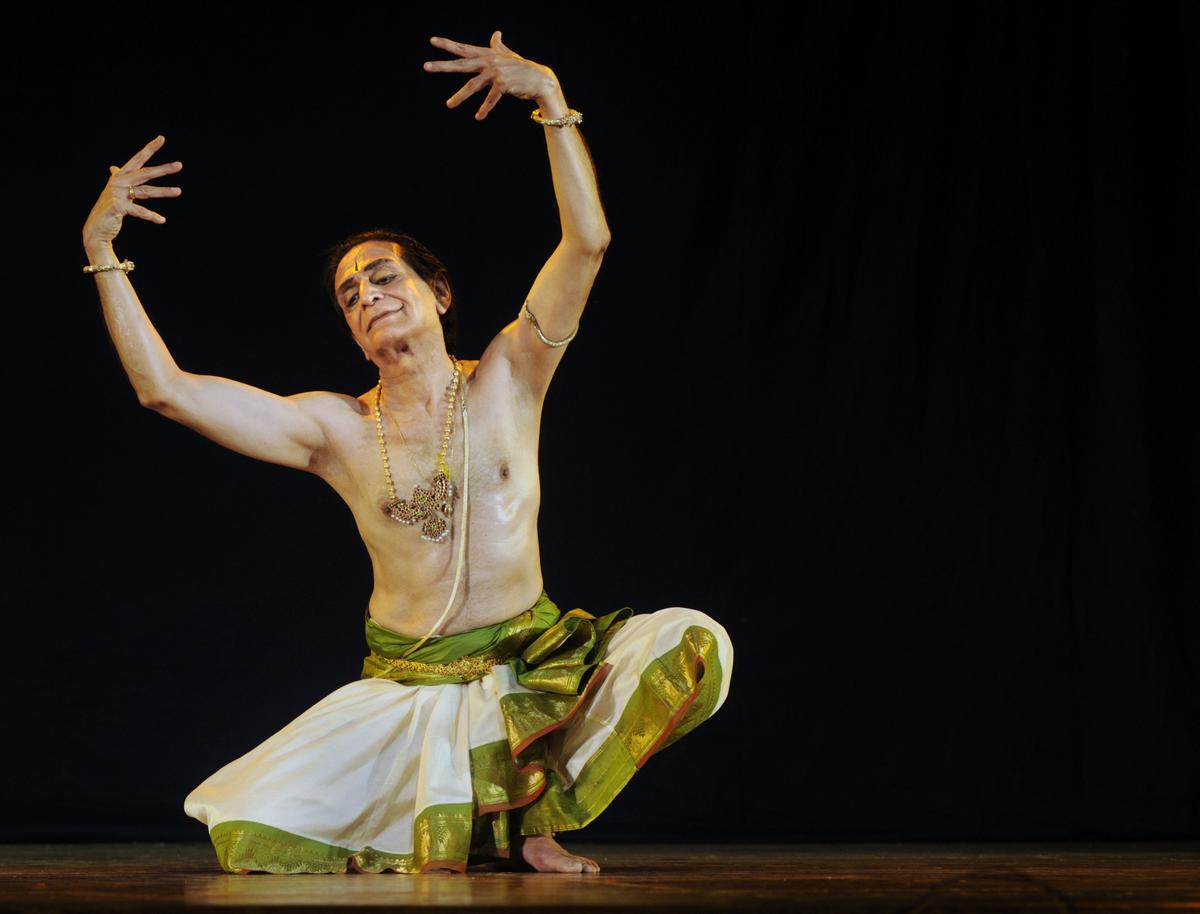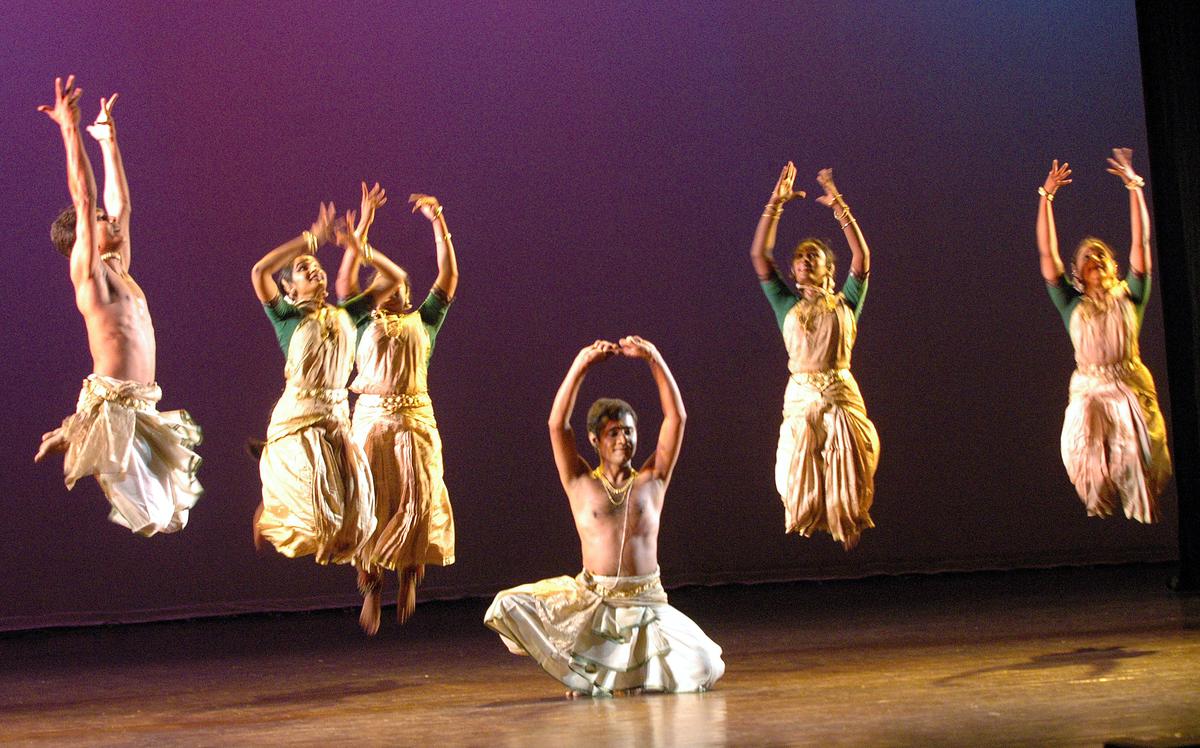C.V. Chandrasekhar during a performance at Bharatiya Vidya Bhavan, Mylapore in Chennai.
| Photo Credit: JOTHI RAMALINGAM B
A flight of steps led to the Faculty of Performing Arts at Baroda’s Maharaja Sayajirao University. The exposed brick work facade and distinctive wooden architecture seemed to hold within them a slice of the country’s rich cultural past.
It was a warm morning in the month of June in 1987, C.V. Chandrasekhar (fondly referred to as CVC) , the Head of the Department, was in his office. He sat ramrod straight in the chair, clearly explaining to those of us who had come for an admission test what the tough curriculum entailed. Looking at our nervous expressions, he comforted us the next minute saying there was nothing wrong in fearing challenges, but that should not come in the way of pursuing one’s passion. Behind the disciplinary veneer was a committed teacher ready to help us embrace both the rigour and excitement of the journey.
The campus echoed with the sounds of dancing feet and instruments as CVC got up and walked to the large prayer and practice hall. The moment he entered, there was hushed silence and the students quickly arranged themselves in straight rows. The girls were clad in crisp cotton Bharatanatyam training costume, the hair neatly tied into a bun or plaited, bindis on their forehead, and matching bangles and earrings. The boys, few in number, wore pristine white cotton dhotis and short kurtas. Under the hawk-eyed gaze of their guru, they began to recite the prayer. Their eloquent hands assumed different mudras and the body various poses. For CVC, training was not limited to mastering the technique, it also extended to impeccable appearance and right attitude.

C.V. Chandrasekar performing at Narada Gana Sabha in Chennai on December 16, 2009.
| Photo Credit:
RAVINDRAN R
Prayer over, the first and second year students of the graduation course moved to their respective classrooms, while the seniors stayed back to perform the padam taught by CVC. Striking the thattukazhai (used for nattuvangam), he indicated just through his eyes and facial expressions his displeasure or satisfaction. The students watched him in awe as he briefly stopped to talk about the need to internalise the rhythm, words and emotions.
As a guru and a performer, CVC’s persona remained the same. Unassuming and forthright were traits that came to mind when you met him. His belief in his art was so strong and deep that he brooked no compromise or reached out for favours. With a perfectly aligned body, his movements combined intense physicality and intellectual sensibility. His expressive face gave life to the lyrics of the compositions he danced to.
C.V. Chandrasekhar during a lecture demonstration at The Music Academy, in Chennai, on January 05, 2008.
| Photo Credit:
GANESAN V
After his teaching stint at Baroda, CVC moved to Chennai, a city where he had trained under inimitable gurus at Kalakshetra. It was here that his mentor Rukmini Devi opened his eyes to the possibilities in the world of dance and beyond it.
Even as CVC grappled with the shifts the art form was then experiencing, his approach to dance remained reverent. And this approach often left him frustrated since he felt the emphasis on contemporariness accorded no space for the soul.
Slowly, however, he came to terms with the idea of performing for a new age audience but, for him, dance was not a showcase, it was an intimate exercise, a sharing of emotions.

Students of C. V. Chandrasekhar performing for the Parampara Festival at Kamani Auditorium, in New Delhi on September 24, 2005.
| Photo Credit:
SANDEEP SAXENA
When I met him once after an experimental performance, he was a bit piqued by the artiste’s bizarre approach to the form. Dance, he always reiterated, should not be looked at in isolation. Innovation should happen organically. One of the most significant aspects of his creative oeuvre was the close relationship between movement and music. Apart from being an influential performer and choreographer, CVC sang and composed too. His works conveyed the potential and power of dance as an expression of the human spirit — they were the outcome of his long, arduous journey of learning and discovery, and the struggle to find acceptance as a male Bharatanatyam dancer. Yet he carved a niche for himself at his own pace and on his own terms.